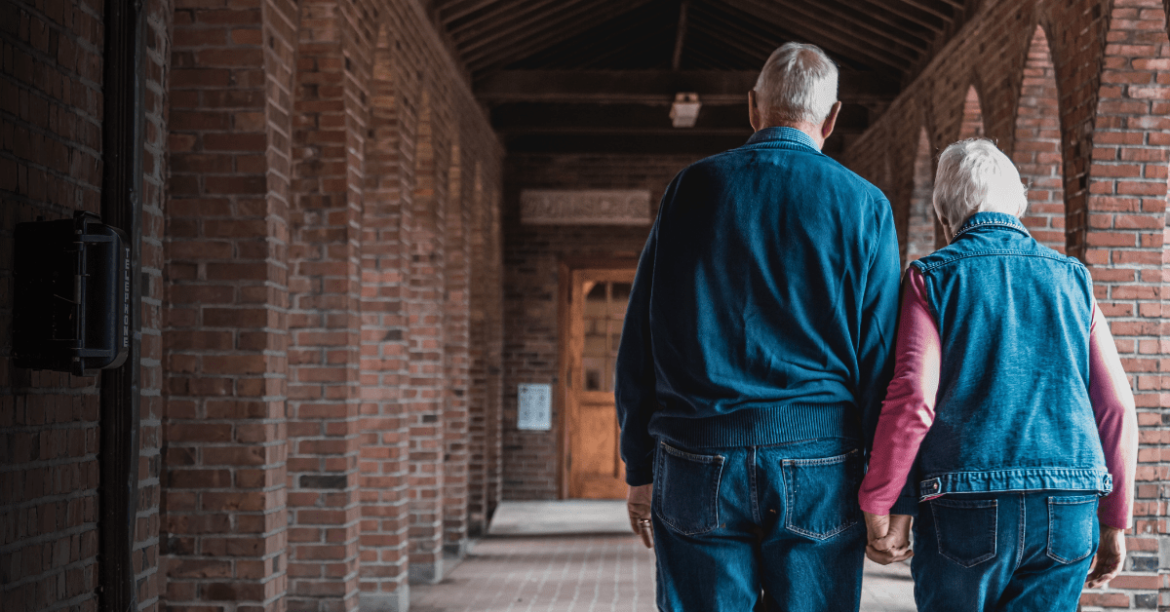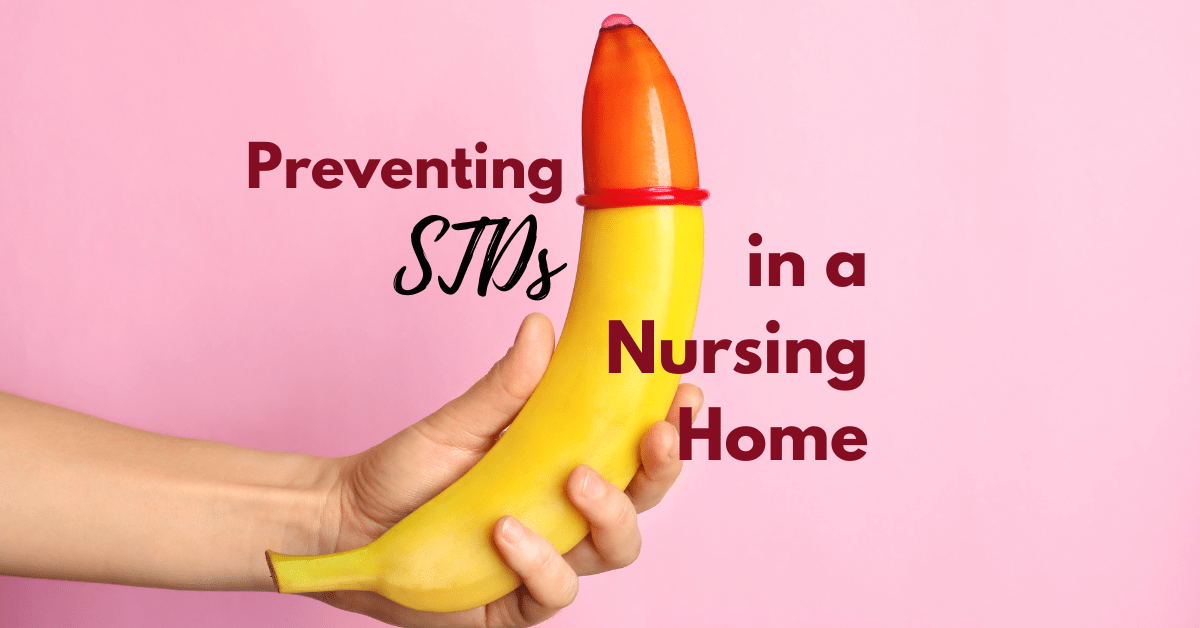In one of his works, Roald Dahl once famously said, ‘ The greatest secrets are always hidden in the most unlikely places. Unfortunately, one of these secrets has been spreading faster than wildfire and is out in the open, a concern that must be dealt with.
That secret is the rise of Sexually Transmitted Diseases in nursing homes. Yes. STDs are spreading fast among seniors in such residences and are increasingly becoming a household concern among healthcare professionals and family members in the U.S.!
Sex life in retirement homes
More and more elderly seniors are sexually active in their 60s. When you think about nursing homes and STDs, it’s challenging to place one next to the other, right?
However, an outbreak of STDs in nursing facilities across the U.S. is becoming not just a concern but also a problem in assisted living facilities. STDs in retirement homes are becoming a new normal, a concern with no end in sight, and nursing homes are being hit the hardest!
The most common STDs among elderly populations include:
- HIV
- Chlamydia
- Syphilis
- Gonorrhea
- Shigella and Meningococcal disease (which are spread through contact)
Are STDs common in nursing homes?
People over a certain age like to believe they are in the race’s final leg; that is life. And while age is just a number, living life to the fullest does not hurt. They
Single senior members, male and female, would engage in sexual activity without often giving it too much thought. As a result, no one stops questioning and asking about medical history. That is why nursing home STD rates among elderly residents are rapidly increasing across major senior living faculties across the U.S.
News about STDs in nursing homes 2023
2023 was a trailblazer of a year, and if you didn’t know, here is how STD rates have crept up under the radar until now!
- According to surveys, 73% of respondents between 57-64 were recognized as sexually dynamic.
- About 53% of respondents between the ages of 65-74 were also active sexually, while another 26% of those aged 75-85 were actively involved. All in retirement or communal living societies for seniors.
- The STDs in nursing homes statistics get even scarier. STD rates have also increased by 260% from 2008 to 2020.
- During this time (2008 – 2020), Chlamydia and Syphilis infections among 65+ rose by 31% and 52%, respectively.
- Among more than 580,000 cases, Gonorrhea increased by 5%, the highest recorded number in the U.S. since 1991.
More about STD rates, nursing homes & their scary statistics
Now, if you want to know about the statistics of it all, beware: it can be an eyesore and just as bad as the disease itself. STDs in nursing homes data shows that seniors over the age of 55 and above have been contracting infections. Here are some more eye-opening stats:
- According to a recent study, the District of Colombia, New York, and Maryland saw the highest instances of Sexually Transmitted Infection rates among older adults 55 and over. The average STI rate per 100,000 was 881.8, 236.2, and 172.7 respectively.
- Georgia, one of the best affordable states to retire in, is amongst the states with the highest rates of STDs among seniors!
- The majority of seniors over 65+ does not use protection!
How are infections spreading in nursing homes?
The STD rates in a nursing home is relatively high because the infection spread often goes unchecked. See, teens and young adults are taught about safe sex early in their lives. But for senior adults, it is usually not discussed as a topic (because they know what they need to).
It has been reported that senior adults are more open about their sexual activities, including experimentation with different positions, particularly in communal societies for the elderly.
Even if a person is aware of STDs, they hide it out of fear of being a social outcast or the stigma. As a result, the infection rate of STDs in such facilities over the last few years has rapidly spread.
Related articles you may want to read:
7 Reasons why STD rates are rising in nursing homes
STD rates have been rising drastically for 55+ aged populations. Lack of awareness regarding STDs and the spread of disease with sexuality-related misconceptions in nursing homes are the primary reasons for the increase.
Here are the most alarming reasons why these STDs are finding their way into the homes of residents looking for nursing care!
1. Nursing home negligence & policies
The policies and structures of nursing homes are the root cause of the problem. Most nursing homes are for-profit organizations, and they prefer getting residents into their facilities while being understaffed. This has led to negligence in nursing homes across the U.S. In such cases, sexual abuse takes place, which can lead to STD rates rising.
2. Misconceptions
Many seniors feel that they can have unprotected sexual activities as they do not have to worry about getting pregnant. However, anyone at any age can get STDs.
3. Social stigma
It can be a matter of embarrassment to some seniors to have STDs or other sexual issues at this age, and they avoid getting tested and taking treatment by visiting healthcare
providers. In doing so, if they are sexually active, they spread infections to other people.
4. Misinformation
Before, there was limited sex education. As a result, many seniors do not have the correct information regarding protected sexual activity and how STDs can spread from person to person.
5. Erectile Dysfunction
Drugs like Viagra (sildenafil) and Cialis can increase their libido and help them ease and maintain their intimate relationships. In doing so, many who were not able to have sex due to erectile dysfunction can stay sexually active and may potentially pass on STDs to their partners.
6. Women’s medication
Women may also take drugs like Addyi and Vyleesi to increase their libido. Vaginal estrogen, estrogen hormone replacement, moisturizers, and lubricants are some options for women that may be used after menopause to maintain their sexual life. But all these can be a factor in the spread of STDs.
7. Physical Health
The longevity of age increases the chance of getting STDs as their immune system gets weak. Women going through their postmenopausal phase may often suffer from thinning vaginal tissues and dryness. These thinning tissues during sex make the infection susceptible to entering the body.
Related articles:
Protecting seniors from STDs in a nursing home
Prevention and treatment are necessary as sexual health is essential at all ages. Here are a few ways for sexually active seniors to protect themselves against STDs and have a healthy sex life:
- Transparency: Sex education can prevent the spread of STDs among seniors. Many of the risks associated with the sexual health of senior citizens can be prevented by having a conversation with your loved ones. In addition, the transmission of HIV can be prevented by the use of condoms. Talking about condom use and safe sex etiquette can save lives.
- Availability of protection in facilities: Free condoms are made available for patients in most healthcare clinics. Similarly, the residents of nursing homes should get free access to condoms, and they should be made aware of the proper use of condoms, which will help to reduce STDs among seniors.
- Getting proper medication: The major STDs seen among older populations in nursing homes are chlamydia, syphilis, and gonorrhea infections. Other than these, three types of STDs can spread among the elderly: bacterial, viral, and parasitic. The bacterial infections of Gonorrhea and chlamydia can be treated with medication.
- Getting regular STD Tests: One can protect oneself by undergoing regular STD tests. Getting regular STD check-ups is essential if you or your family member or elderly friend is sexually active.
- Fast treatment: If your STD test in the facilities gives you a positive result, then it is essential to get treated as soon as possible. Older adults in nursing homes can request an appointment from their in-house doctor or nurse or visit a primary care facility if needed.
- Making your partner aware: If you have a positive result for STD, then you must tell your previous partners immediately and ask them to get a test. This way, the further spread of the STD can be prevented.
Where to learn more
While specific statistics might be elusive, we can still provide general information and cite potential sources for further research:
- Centers for Disease Control and Prevention (CDC): While they might not have specific data on nursing homes, they do provide comprehensive information on STDs overall, including trends, risk factors, and prevention strategies.
- National Council of State Boards of Nursing (NCSBN): This organization may have data or resources related to nursing home care and potential risks.
- Academic studies: Search for academic articles and research studies on elder abuse, neglect, and sexual exploitation. These studies might contain relevant data or insights.
- State health departments: Some states might have data on STDs in long-term care facilities, but this information can be inconsistent and difficult to obtain.
Final Thoughts
If you are thinking about retiring, it is best you be informed about the elephant in a nursing home room! Though it is a scary and shocking afterthought, it is better to be aware and informed and spread this knowledge, not the disease.
Here are some more thought-provoking articles to raise awareness!
- What nursing homes won’t tell you
- Must-ask retirement planning questions
- How often to visit a parent in nursing home?
FAQs
Is there a high rate of STDs in nursing homes?
STDs in nursing homes are rapidly growing to be a problem. With the widespread availability of sexual performance-enhancing drugs and therapy, STDs among sexually active senior adults have increased in nursing homes across the country. Over the last seven years, the STD rate in nursing homes and even assisted living facilities has risen.
Are STDs bad in nursing homes?
STDS are a severe health hazard in nursing homes since it affects seniors, who are already at a complicated age. It is a problem because senior men over 60 who use E.D. drugs for sexual activity with postmenopausal women can have unprotected sex, leading to a higher rate of getting infected with STDs.
Do seniors have high STD rates?
Seniors living in nursing homes have a high chance of getting STDs, mainly because they have a weakening immune system. As a result, the rate of STDs in America among seniors in nursing homes is high. Unfortunately, they are less likely to discuss this openly, increasing the chance of spreading the disease.
What are the 20 types of STDs?
Many types of STDs are more or less related to one another. But more commonly, the STDs are:
- Bacterial vaginosis
- Genital warts.
- Chlamydia
- Gonorrhea
- Chancroid
- Pubic lice
- Hepatitis
- Herpes
- Trichomoniasis
- HIV/AIDS
- Scabies
- Human Papillomavirus (HPV) Infection
- Pelvic Inflammatory Disease (PID)
Is chlamydia common in older adults?
It is standard among senior adults, particularly those in senior living facilities like nursing homes. The rate of STDs in older adults has been rising, and chlamydia is quite common among those infections. Sexually active older are at risk for diseases such as syphilis, herpes, and commonly chlamydial infection.



